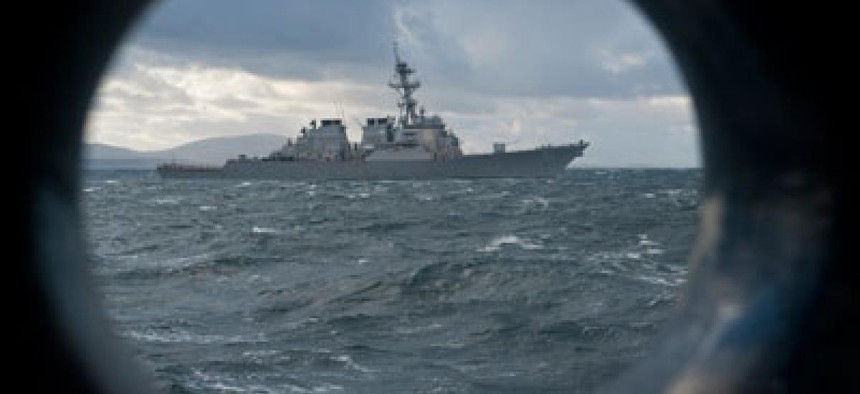
U.S. Navy
Navy’s amphibious fleet could fall short of goals, CBO says
Main vehicle for delivering Marines to combat might be scaled back by tightened budgets.
The Navy's hopes to grow its fleet of amphibious ships are apt to go unfulfilled during much of the next 30 years, according to a recent Congressional Budget Office report.
The nonpartisan analysis does not factor in the new likelihood of further Pentagon budget cuts.
The Navy currently deploys 29 amphibious warfare ships to carry Marines and equipment into combat and to perform peacetime missions. Under the service's 2012 shipbuilding plan, the amphibious fleet was to rise to 33 over 30 years, at an estimated cost of $50 billion.
But CBO analysts determined that current progress "would not provide enough amphibious ships for the Marine Corps to prepare and train for all of the missions it might be called on to perform over the next three decades."
In projecting the fluctuating size of the amphibious fleet between now and 2041, CBO said the Navy's inventory will reach its goal of 33 ships in only half of those years, from 2017 to 2031. The demand for amphibious ships on routine peaceful missions has risen by 80 percent since 2007, the report said.
Requested by the Senate Armed Services Committee, the report evaluated the Navy commanders' goals expressed in a 2010 exercise that was "fiscally unconstrained" to reflect their needs for fulfilling their mission regardless of the budget situation or current ship deployments. CBO stressed that the Navy is in a position to achieve the goals for its amphibious fleet set in a fiscally constrained exercise in 2007. Meeting the loftier goal from three years later, it added, also would lengthen troop deployments and reduce time in the ships' home ports.
"It is unclear how useful an unconstrained measure of demand is for force planning," wrote Eric J. Labs of CBO's national security division. "Without constraints, the desire for any asset usually exceeds its supply."
The Navy did not have a comment for this story by the time of publication.
William Hartung, a defense specialist at the Center for International Policy, told Government Executive that the report seemed "to acknowledge that cutting back on the Navy's desired ability to project force globally would be manageable. So, if they took that logic a step further, it might allow for actual reductions without substantially undermining the Navy's global reach."
Todd Harrison, a senior fellow at the Center for Strategic and Budgetary Assessments, said the report means "the Navy is going to have to scale back from what it wants to have, to go from wants to real needs." If the current debt ceiling law's across-the-board sequestration cuts take effect at the Pentagon, he added, the spending assumptions would go back to 2007 levels, "which is not unreasonable."
Winslow Wheeler, director of the military reform project at the Center for Defense Information, said, "There is nothing new in any finding that a `fiscally unconstrained' set of requirements leaves any military service short of its desires. The real world operates differently, however; resources are an essential element for putting together any shipbuilding or force deployment plan. The fact that the Navy has failed to include such realities in its planning and is now whining that its desires are not met demonstrates vividly how broken the DoD planning process is."
NEXT STORY: Some TRICARE enrollees will save money in 2012







